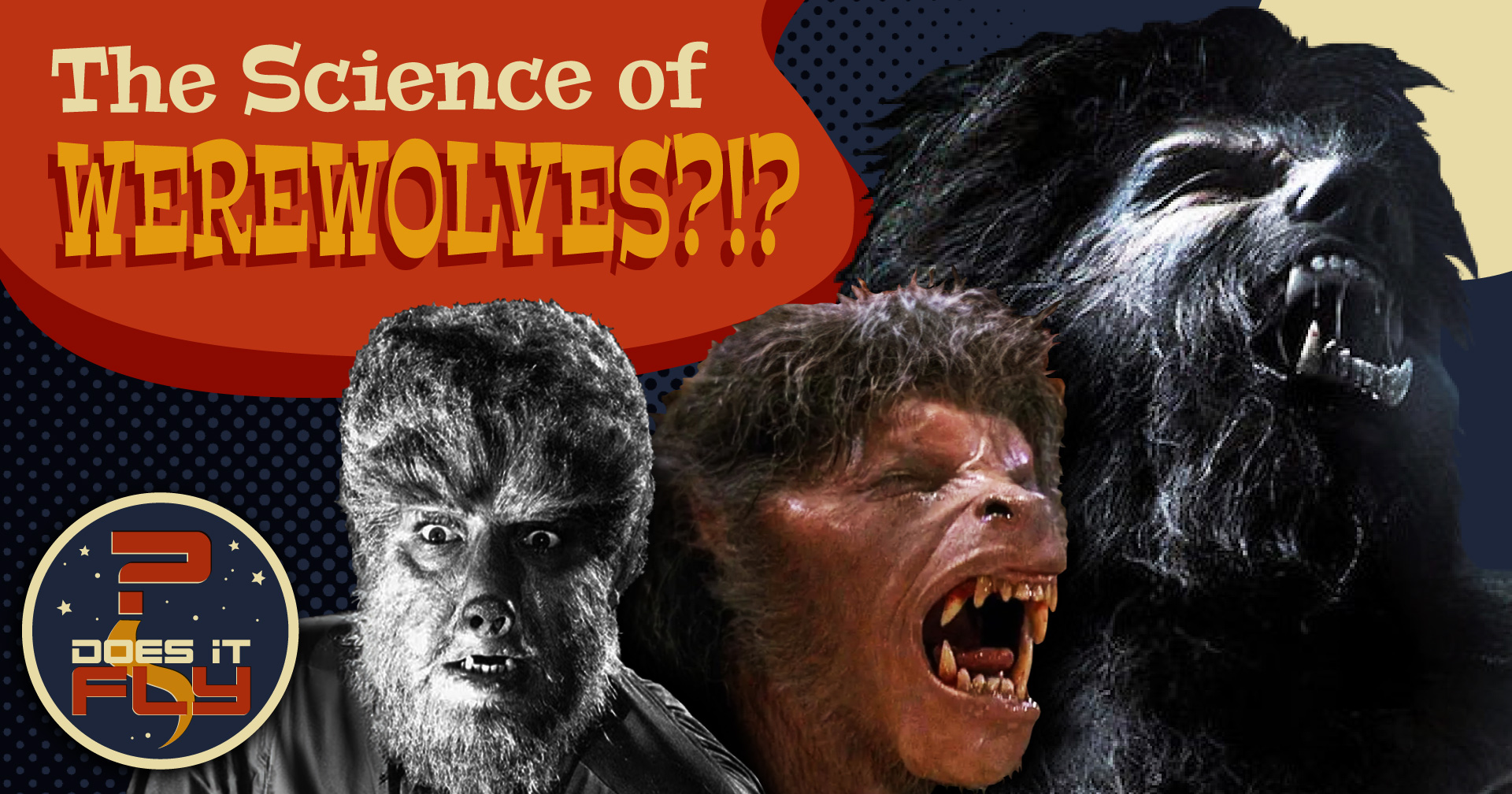The Wolf Man and the Science of Werewolves
The Wolf Man explores a disturbingly realistic vision of what it would take to turn a man into a werewolf. Does this horror movie have any basis in science fact? Do werewolves and wolf men even obey their own story rules?
“Even a man who is pure of heart and says his prayers by night, may become a wolf when the wolfbane blooms and the autumn moon is bright.”
- The Wolf Man (1941)
Werewolves, wolf men (and women), and really werebeasts of all shapes and sizes have been a part of our collective unconscious for about as long as we’ve been able to tell stories. There’s something universal (no pun intended) about the concept of a human being shape-shifting back into a more primal state. And if these tales were terrifying around a campfire, they’re even more effective on screen, where all of the brilliant special effects Hollywood has to offer have long been brought to the table to transform ordinary actors into bloodthirsty werebeasts.
But just where (“where oh, werewolf…”) does this story come from? Is there any chance at all that humans can devolve into a more animalistic state? Is there any reason to believe that werewolves could be real, even if they aren’t exactly as depicted on film?
Check out the latest episode of Does it Fly? for the answers to these questions and more!
SUGGESTED VIEWING
This episode is based primarily on the version of the werewolf legend told in 2010’s The Wolfman, directed by Joe Johnston (we took a look at another of Johnston’s films in our episode on The Rocketeer). It’s a tremendously underrated film that starred Benicio del Toro, Emily Blunt, Anthony Hopkins, and Hugo Weaving. If you haven’t seen it, we rate it pretty highly.
But that film was an updating of perhaps the most iconic werewolf movie of all time, 1941’s The Wolf Man starring Lon Chaney, Jr. A key piece of the classic Universal Monsters cycle of films, The Wolf Man is the source of many of pop culture’s most enduring pieces of werewolf lore.
However, if you’re looking for the greatest werewolf movie of all time, the one that is the best blend of old and new, then look no further than 1981’s An American Werewolf in London. While something of a horror-comedy, it won the first ever Academy Award for Best Makeup thanks to Rick Baker’s incredible werewolf makeup and what is the undisputed champion of amazingly realistic on-screen man-to-wolf transformations ever put on film. It’s not for the faint of heart, but you can’t call yourself a true wolf-fan until you’ve seen this one.
For more on the origins of horror stories, Tamara also recommends Monstrum, which is exceptionally cool.
FURTHER READING
Do you want to delve a little deeper into the facts, concepts, and stories Hakeem and Tamara referenced in today’s episode? Of course you do!
Metamorphosis
Fairly common in nature is the basic concept of metamorphosis, most commonly illustrated by the egg to larva to pupa to final form life cycle found in insects (think caterpillars to butterflies rather than humans to wolves). Not a human thing, necessarily, but a good indicator of how such transformations aren’t uncommon in nature.
Lycanthropy
There is actually a clinical disorder in which a human can hold the psychological belief that they’ve either turned into a wolf or are in the process of becoming one. There are actual scientific journal articles on the topic!
Werewolves in Mythology
One of the earliest recorded stories as we know them is the epic of Gilgamesh, and even there someone turns into a wolf. Similarly, it’s a theme that appears more than once in Ancient Greek mythology. Basically, werewolves have been with us since long before Hollywood discovered them.
The Original Werewolf Movie
While we detail plenty of cool werewolf movies in this episode, there’s one you can only read about, the long lost (thanks to fire) 1913 silent film The Werewolf.
LUCA
Known as the Last Universal Common Ancestor, it’s proof that every species on this planet shares a little DNA. Does it prove the existence of werewolves? Absolutely not. It’s still pretty cool, though!
WANT MORE FROM DOES IT FLY?
This isn’t our first spooky rodeo! If you’re looking for other horror-themed Does it Fly? episodes, allow us to suggest…
The Secret Science of Ghostbusters!
The Truly Disturbing Horror of Smile (and Smile 2)
What Beetlejuice Gets Right About Demonic Possession!
FOLLOW US!
Stay in the loop! Follow DoesItFly? on YouTube and TikTok and let us know what you think!
And don’t forget to follow Roddenberry Entertainment:
Instagram: @RoddenberryOfficial
Facebook: Roddenberry
Blueky: @Roddenberry
For Advertising Inquiries: doesitfly@roddenberry.com
Check out the official Does it Fly? playlist, too!
MORE EPISODES

The Abyss: A Classic Sci-Fi Movie Showed How Humans Can Breathe Underwater
One of the most iconic moments in James Cameron’s The Abyss involves a scientifically plausible method of breathing underwater.

Can We Create Real Life Twisters?
The (air) pressure is on as we dive into some on-set stories, Wizard of Oz references, and barometric gossip as we break down the science and story logic behind a beloved 90s movie: 1996’s Twister.

What the Lara Croft: Tomb Raider Movie Got Wrong
The first Tomb Raider movie featured a device known as the “Triangle of Light” which has some weird and fun real world parallels!


